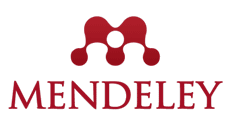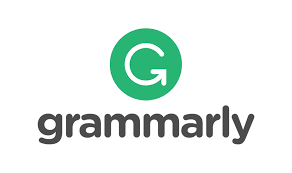Penerapan metode genius learning strategy sebagai upaya meningkatkan prestasi belajar IPA di sekolah dasar
DOI:
https://doi.org/10.57176/jn.v1i1.1Keywords:
metode belajar, genius learning strategy, hasil belajar IPA, sekolah dasarAbstract
Penelitian ini merupakan Penelitian Tindakan Kelas dengan tujuan untuk meningkatkan prestasi hasil belajar IPA dengan menggunakan metode Genius Learning Strategy. Subyek penelitiannya adalah siswa kelas V SD Negeri Cibeunying 03 yang berjumlah 17 siswa. Instrumen-instrumen yang digunakan dalam penelitian adalah tes pembelajaran IPA, lembar observasi guru, lembar observasi siswa, lembar catatan lapangan, wawancara dan dokumentasi. Untuk menentukan validitas instrumen digunakan rumus korelasi product moment dan dikonsultasikan dengan ahli. Data dianalisis secara deskriptif kuantitatif dan kualitatif. Adapun indikator keberhasilan penelitian ini ditandai dengan meningkatnya kualitas proses (keaktifan siswa dan suasana kelas menjadi lebih hidup) dan hasil belajar IPA (75% siswa mencapai kriteria ketuntasan minimal/KKM 7,5). Hasil penelitian menunjukkan dengan diterapkannya metode Genius Learning Strategy, kualitas proses pembelajaran menjadi meningkat, terbukti siswa menjadi lebih aktif, komunikatif, dan suasana kelas menjadi lebih menyenangkan. Selain itu, prestasi hasil belajar IPA pada siswa juga meningkat, terbukti dengan nilai rata-rata siswa pratindakan sebesar 6,91 dengan pencapaian KKM 41,12%, pascatindakan siklus I sebesar 8,03 dengan pencapaian KKM 64,70%, dan pascatindakan siklus II sebesar 8,29 dengan pencapaian KKM 82,39%.
This research is Class Action Research with the aim to improve the achievement of science learning results by using genius learning strategy method. The subject of his research was grade the fifth grade students of SD Negeri Cibeunying 03 which involve 17 students. The instruments used in the research are science learning tests, teacher observation sheets, student observation sheets, field notes, interviews and documentation. To determine the validity of the instrument used product moment correlation formula and consulted with experts. The data is analyzed descriptively quantitatively and qualitatively. The indicators of success of this study are characterized by increasing quality of process (student activity and classroom atmosphere becoming more lively) and science learning outcomes (75% of students achieved passing grades/KKM 7.5). The results showed that with the implementation of Genius Learning Strategy method, the quality of the learning process became improved, students proved to be more active, communicative, and the classroom atmosphere became more pleasant. In addition, the achievement of science learning outcomes in students also increased, as evidenced by the average score of pre-act students of 6.91 with the achievement of KKM 41.12%, post-act cycles I of 8.03 with the achievement of KKM 64.70%, and post-act cycle II of 8.29 with the achievement of KKM 82.39%.
References
Gunawan, A.W. (2006). Genius Learning Strategy. Gramedia Pustaka Utama: Jakarta.
Hariri, H., Karwan, D.H., Haenilah, E.Y., Rini, R., & Suparman, U. (2021). Motivation and learning strategies: Student motivation affects student learning strategies. European Journal of Educational Research. 10 (1), 39-49. DOI: https://doi.org/10.12973/eu-jer.10.1.39
Juliani, R., & F. Meliana. (2014). Pengaruh Strategi Genius Learning Terhadap Hasil Belajar Siswa Pada Materi Fisika Topik Listrik Dinamis Kelas IX SMP Swasta Raksana Medan. Jurnal Pendidikan Fisika. 3 (1), Juni 2014, 34-40. DOI: https://doi.org/10.22611/jpf.v3i1.3274
Junaeti, E, H. Sutarno, & R.R. Nurmalasari. (2018). Genius Learning Strategy of Basic Programming in an Adventure Game. The 2nd Annual Applied Science and Engineering Conference (AASEC 2017). IOP Conference Series: Materials Science and Engineering 288 (2018) 012057. DOI: 10.1088/1757-899X/288/1/012057
Muhibbin. (2008). Psikologi Pendidikan. Bandung: PT Remaja Rosdakarya.
Nurhayati. (2014). Pengaruh Strategi Genius Learning Melalui Model Pembelajaran ARIAS (Assurance, Relevance, Interest, Assesmen and Satisfaction) Terhadap Hasil Belajar Siswa. Jurnal Nalar Pendidikan. 2 (1), 18-24.
Patria, B., A.D. Yusandika, & H. Wulandary. (2021). Pengaruh Penerapan Strategi Genius Learning terhadap Kemampuan Berpikir Kreatif Peserta Didik Kelas X IPA SMA. U-Teach: Journal Education of Young Physics Teacher. 1 (2), 57-65. DOI: https://doi.org/10.30599/uteach.v1i2.30
Prayoga, S.T., Suratno, & Sulifah, A. H. (2015). Penerapan Model Pembelajaran Genius Learning dengan Metode Eksperimen dalam Meningkatkan Aktivitas dan Hasil Belajar IPA Biologi. Jurnal Edukasi. II (3), 1-4. DOI: https://doi.org/10.19184/jukasi.v2i3.4321
Republik Indonesia. 2003. Undang-Undang Sistem Pendidikan Nasional No.20 tentang Sistem Pendidikan Nasional. Jakarta: Depdiknas.
Roza, M., & M. Ulandari. (2016). Penerapan Strategi Genius Learning Pada Pembelajaran IPA Di Kelas IV Sekolah Dasar Negeri 21 Lubuk Lintah Padang. Jurnal Tarbiyah Al-Awlad. 7 (2), 570-579.
Sanjaya, W. (2008). Strategi Pembelajaran. Jakarta: Kencana Prenada Media Group.
Setiani, R. (2014) Penggunaan Strategi Genius Learning Untuk Meningkatkan Keaktifan Belajar Matematika Siswa Kelas VB SD Muhammadiyah 2 Kauman Surakarta Tahun Ajaran 2013 2014. Skripsi thesis, Universitas Muhammadiyah Surakarta.
Sirait, G., E. Djulia, & S. Sinaga. (2019). Pengaruh Genius Learning Strategy Terhadap Kemampuan Berpikir Tingkat Tinggi Pada Materi Sistem Pernapasan Manusia. Jurnal Pelita Pendidikan. 7(4), 191-196. DOI: https://doi.org/10.24114/jpp.v7i4.15264
Suprijono, A. (2009). Cooperative Learning. Yogyakarta: Pustaka Pelajar.
Slavin, R. (2008). Cooperative Learning Terjemahan. Bandung: Nusa Media.
Downloads
Published
How to Cite
Issue
Section
License
Copyright (c) 2021 Dewi Masithoh

This work is licensed under a Creative Commons Attribution-ShareAlike 4.0 International License.
You are free to:
- Share — copy and redistribute the material in any medium or format for any purpose, even commercially.
- Adapt — remix, transform, and build upon the material for any purpose, even commercially.
- The licensor cannot revoke these freedoms as long as you follow the license terms.
Under the following terms:
- Attribution — You must give appropriate credit , provide a link to the license, and indicate if changes were made . You may do so in any reasonable manner, but not in any way that suggests the licensor endorses you or your use.
- ShareAlike — If you remix, transform, or build upon the material, you must distribute your contributions under the same license as the original.
- No additional restrictions — You may not apply legal terms or technological measures that legally restrict others from doing anything the license permits.
Notices:
You do not have to comply with the license for elements of the material in the public domain or where your use is permitted by an applicable exception or limitation .
No warranties are given. The license may not give you all of the permissions necessary for your intended use. For example, other rights such as publicity, privacy, or moral rights may limit how you use the material.
















